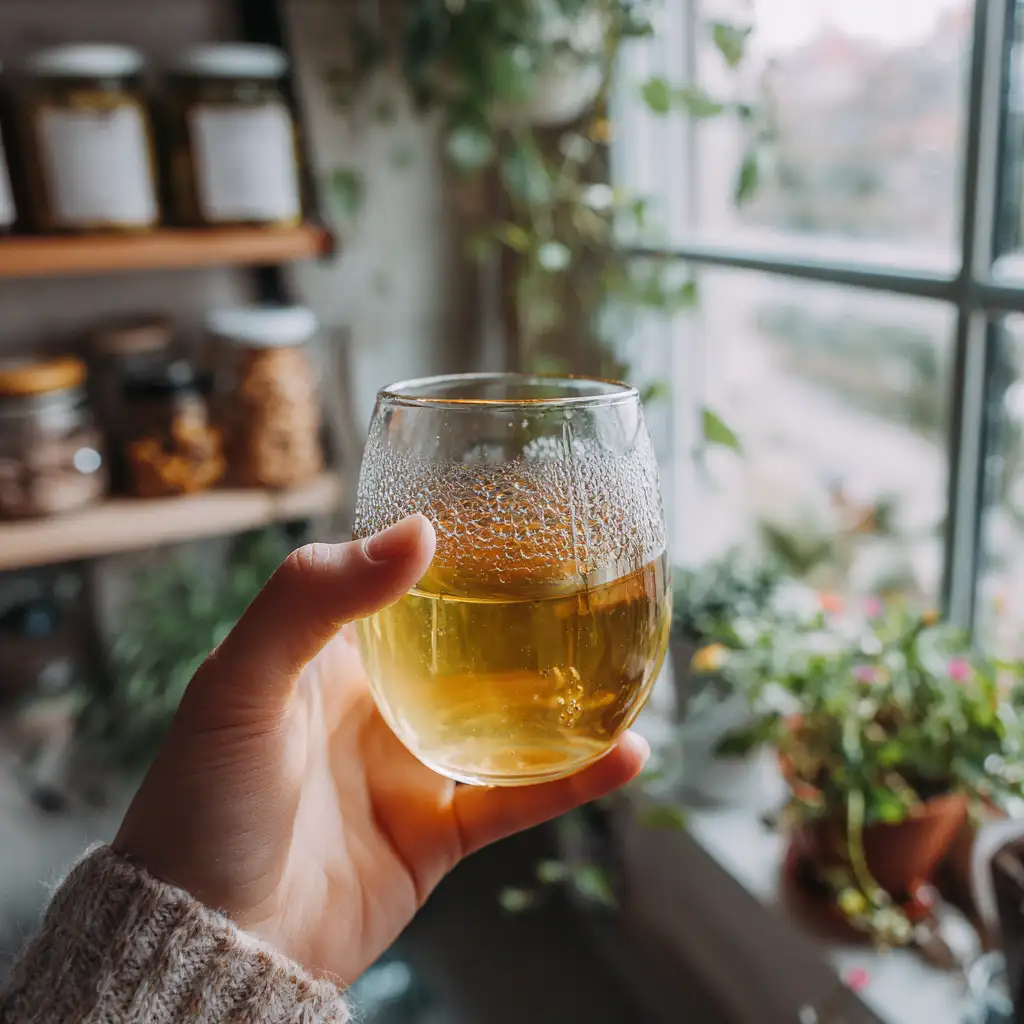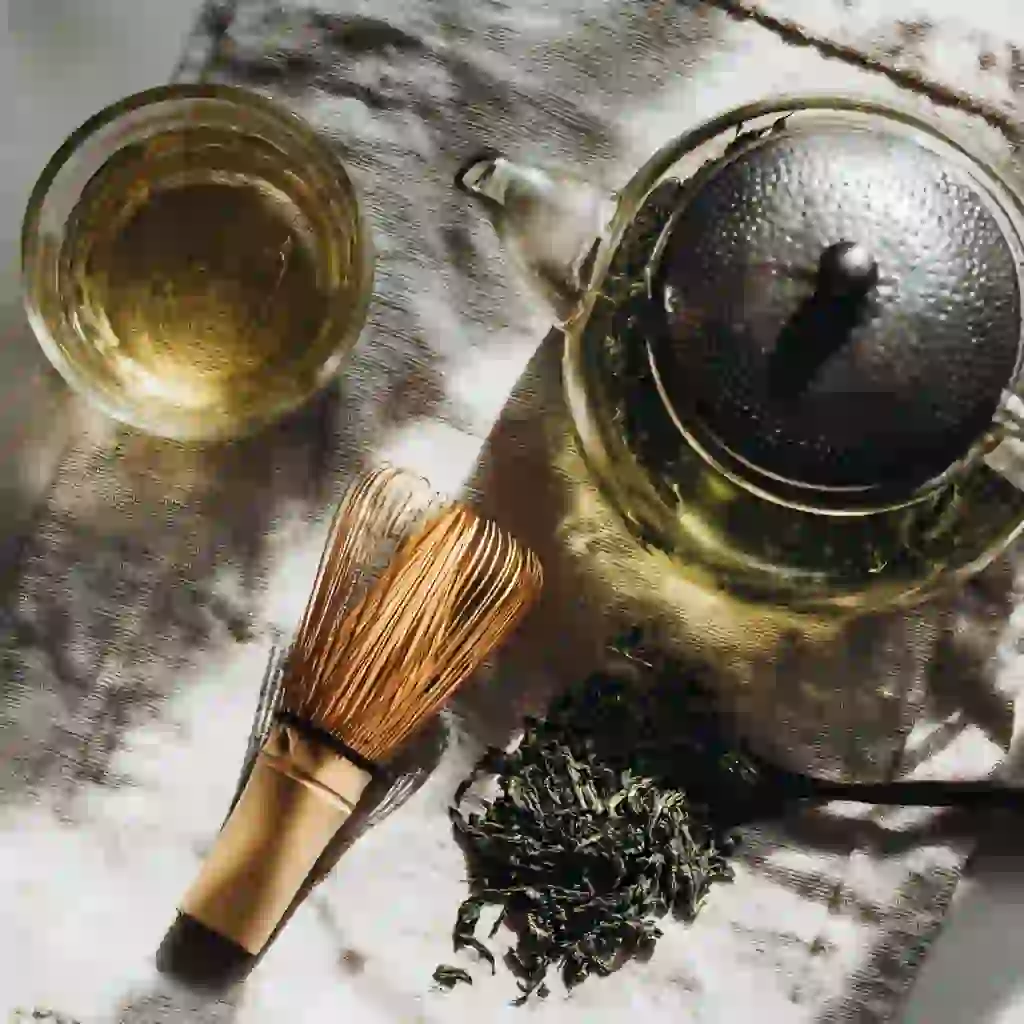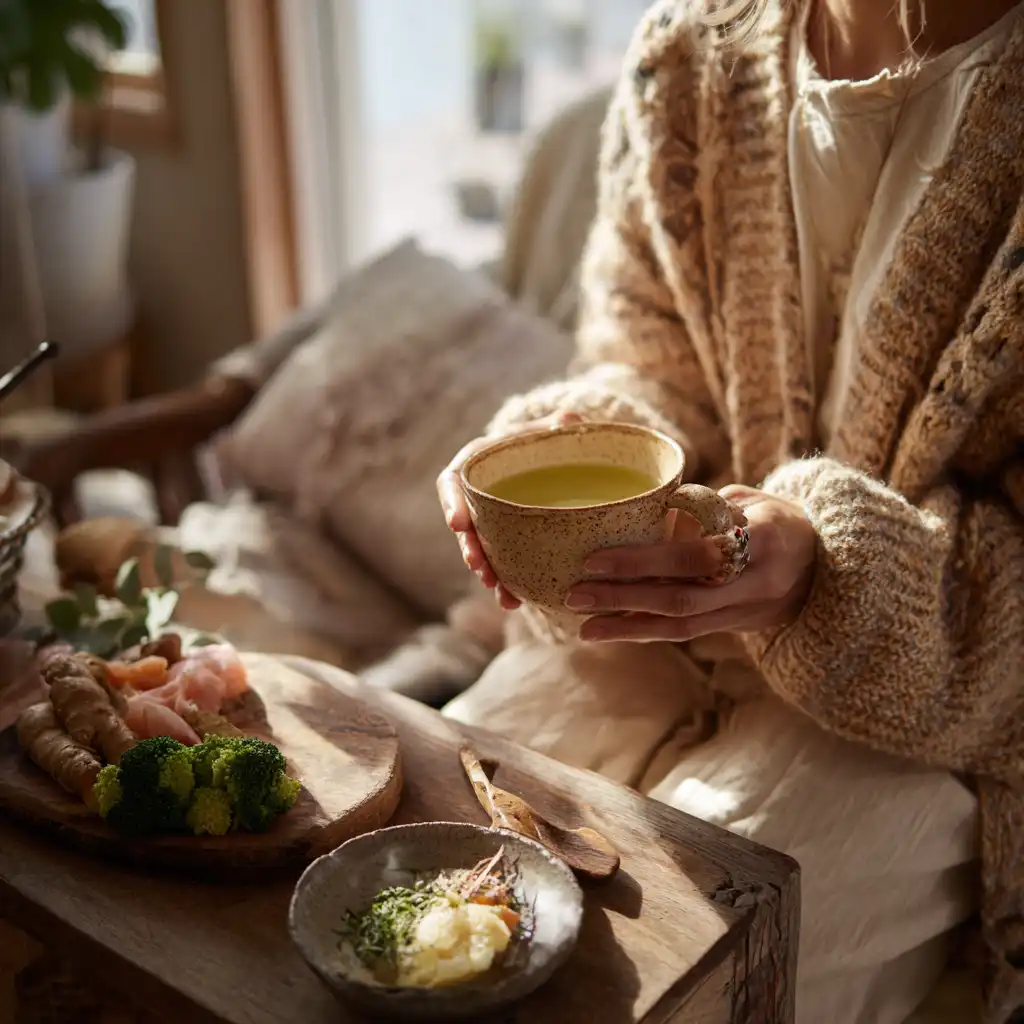I still remember the first time I tried green tea—it was on a chilly afternoon in a small teahouse tucked away in Kyoto. The host served it with such intention, whisking matcha with grace and steeping leaves in water that was just shy of boiling. It wasn’t just tea. It was a quiet ritual. Back home, I tried to recreate the magic but ended up with something far too bitter to enjoy. That little failure started my journey to truly understanding how to brew green tea the right way—and today, I’m sharing everything I’ve learned with you.
This article is your complete guide on how to brew green tea, written especially for anyone who’s ever asked, “Why doesn’t mine taste like it should?” Whether you’re just starting out or looking to perfect your brew, I’ll walk you through different methods—from hot to cold, bagged to matcha. You’ll learn the ideal water temperature, how to avoid bitterness, easy tips to improve flavor, and beginner mistakes to avoid. If you’re curious about iced green tea or want to make it more palatable with natural boosters like lemon or honey, I’ve got you covered too.
By the end of this guide, you’ll not only know how to brew green tea—you’ll feel confident doing it, your way. Looking for inspiration? Try our FGO Tea Review to discover great beginner-friendly tea options to get started.
Print
How to Brew Green Tea
A complete guide to brewing green tea perfectly—hot or cold, loose leaf or matcha—so you can enjoy better flavor, less bitterness, and more confidence every time.
- Total Time: 7 minutes
- Yield: 1 cup 1x
Ingredients
- High-quality green tea (Sencha, Matcha, Gyokuro, etc.)
- Filtered water (160°F to 175°F)
- Tea kettle or pot
- Infuser or strainer (for loose leaf)
- Bamboo whisk and bowl (for matcha)
- Optional: lemon slices, fresh mint, or honey
Instructions
- Heat filtered water to 160°F–175°F. Never use boiling water for green tea.
- Use 1 teaspoon loose leaf tea (or 1 tea bag) per 6–8 oz cup of water.
- Steep for 1–2 minutes depending on the type of green tea.
- Strain and taste. If it tastes right, stop steeping immediately.
- For cold brew: Combine 1 tbsp loose leaf or 2 tea bags with 4 cups cold water, refrigerate 6–8 hours, then strain.
- For iced tea: Brew hot using double leaves, chill, and serve over ice.
- For matcha: Sift ½–1 tsp matcha into bowl, add 2 oz hot water (160°F), whisk in zigzag until frothy.
- Add natural boosters like lemon, mint, or honey after brewing to enhance flavor.
- Avoid over-steeping or squeezing tea bags to reduce bitterness.
Notes
Always taste your brew early to avoid bitterness. Use ceremonial-grade matcha for best results. Store all tea in airtight containers away from light and moisture.
- Prep Time: 5 minutes
- Cook Time: 2 minutes
- Category: Beverage
- Method: Steeped or Whisked
- Cuisine: Asian
- Diet: Vegan
Nutrition
- Serving Size: 1 cup
- Calories: 2
- Sugar: 0g
- Sodium: 0mg
- Fat: 0g
- Saturated Fat: 0g
- Unsaturated Fat: 0g
- Trans Fat: 0g
- Carbohydrates: 0g
- Fiber: 0g
- Protein: 0g
- Cholesterol: 0mg
Why Green Tea Brewing Matters
The Cultural Significance and Tradition of Brewing Green Tea
Brewing green tea isn’t just about making a drink—it’s about participating in a timeless ritual that connects people across cultures. In Japan, brewing matcha is part of the tea ceremony, a meditative act filled with respect and purpose. In China, the way you steep green tea can change from region to region, each with its own charm. These traditions show that learning how to brew green tea isn’t just about flavor—it’s about intention, pace, and presence.

Green tea is often seen as a symbol of simplicity, clarity, and balance. And how you brew it can impact your whole tea experience. Whether you’re sipping solo or preparing it for guests, the brewing process sets the tone.
How Brewing Methods Impact Flavor and Nutrients
When it comes to flavor, how to brew green tea makes all the difference. Too hot, and the tea turns bitter. Too long, and it loses its subtle, grassy sweetness. Green tea is delicate. The amino acids and catechins inside it are sensitive to heat and time. That’s why the brewing method isn’t just a detail—it’s everything.
Learning how to brew green tea properly helps preserve its antioxidants, like EGCG, which many people appreciate for their potential health benefits. It also means unlocking the best taste without needing to add sweeteners or cover up bitterness.
Pro Tip: Always use water around 160°F to 175°F for green tea—never boiling. Let your kettle cool a bit before pouring.
If you’re curious about how other teas handle steeping, don’t miss our guide on fermented tea, which shows how temperature and timing vary for gut-healthy options.
Understanding Your Tea Leaves
Types of Green Tea (Sencha, Matcha, Gyokuro, etc.)
Before diving into how to brew green tea, it helps to know what kind you’re working with. Not all green teas are created equal—some are steamed, some pan-fired, and some are powdered like matcha. Each type brings a different flavor profile and brewing method.
Sencha is the most common in Japan—slightly grassy, bright, and perfect for daily sipping. It requires short steeping at low temperatures. Gyokuro, on the other hand, is shaded before harvest to increase its umami and sweetness. It’s more delicate and demands extra care when brewing. Then there’s Matcha, which is a fine green powder made from shade-grown tea leaves. You don’t steep matcha—you whisk it.
Knowing your tea type helps you choose the best method for how to brew green tea and get the most flavor from every cup.

Pro Tip: Store your green tea in a cool, dry place in an airtight container. Light and moisture quickly dull its flavor.
Loose Leaf vs. Bagged Green Tea – Which Brews Better?
One of the first decisions you’ll face in learning how to brew green tea is whether to go with loose leaf or tea bags. Loose leaf tea often gives a more vibrant, full-bodied taste. It allows the leaves to expand and release their full aroma and oils.
Tea bags are more convenient but often use smaller, broken leaves (called “fannings”) which can make the tea brew faster—and sometimes bitter if left too long. That doesn’t mean they’re bad, but knowing the difference can improve your results.
If you’re just getting started, check out our FGO Tea Review for a solid beginner-friendly green tea option that comes in both bagged and loose-leaf form.
Pro Tip: For loose leaf green tea, use a fine mesh strainer or reusable infuser. It helps keep the brew clean without losing essential flavor oils.
The Basics of How to Brew Green Tea
Water Temperature and Steeping Time
The single most important thing you can do when learning how to brew green tea is to watch your water temperature. Boiling water will scorch the delicate leaves and leave you with a cup that tastes overly bitter or astringent. For most green teas, the sweet spot is between 160°F and 175°F (71°C–80°C). Matcha is even more delicate and should be whisked with water around 160°F.
Time matters too. Steeping green tea for too long can ruin its smooth character. A general rule? Start with a 1–2 minute steep, taste, and adjust. Japanese Sencha often needs just one minute, while Chinese green teas can take two to three.
Pro Tip: If you don’t have a thermometer, let freshly boiled water sit for about 3 minutes before pouring it over your green tea leaves.
The Right Tea-to-Water Ratio for Flavor and Aroma
Getting the balance right is another key part of how to brew green tea successfully. Use roughly 1 teaspoon (2 grams) of loose leaf tea for every 6 to 8 ounces of water. Too much tea can overwhelm your palate, while too little leaves the flavor thin.
With tea bags, it’s often easier—just one bag per cup. But don’t forget to adjust steep time depending on the tea type. Always check the label or blend instructions if you’re trying something new.
If you’re interested in experimenting with tea flavors, don’t miss our calming lemon balm tea recipe. The preparation method is surprisingly similar and gives you a better feel for water-to-herb ratios.
Pro Tip: Use filtered water instead of tap. It reduces unwanted minerals and helps your green tea taste clean and crisp.
How to Make Green Tea Cold and Iced
How to Make Green Tea Cold: Cold Brew Method Explained
If you’ve only ever had green tea warm, learning how to brew green tea cold-style is a game changer. Cold brewing is a gentle, slow process that reduces bitterness and brings out a naturally sweet, smooth taste. It’s perfect for summer or if you’re someone who finds hot drinks a bit too intense.
To cold brew green tea, combine 1 tablespoon of loose leaf tea (or 2 tea bags) with 4 cups of cold filtered water in a jar. Cover and refrigerate for 6–8 hours. Then strain and serve over ice. That’s it. No heat needed.
This method works especially well with Sencha or jasmine green tea, which naturally carry floral notes. Many people on TikTok swear by cold-brewed green tea as a refreshing midday energy boost—and for good reason.
Pro Tip: Always use glass or BPA-free containers for cold brew to avoid flavor transfer.
How to Make Green Tea Iced Using Hot Brew + Chill
Another easy way to enjoy iced green tea is to brew it hot, then chill it quickly. If you already know how to brew green tea, this method is a natural next step. Brew a strong batch using double the tea leaves, then pour it over ice or refrigerate for later.
This hot-to-cold approach is faster than cold brewing and works great if you’re short on time. You can add slices of lemon or fresh mint to make the flavor pop. If you’re curious about teas with added health benefits, our kombucha recipe might interest you—fermented green tea with a fizzy twist.
Pro Tip: Chill your serving glasses in the freezer for 10 minutes before pouring iced tea—they’ll keep your drink colder longer.
Matcha Style – How to Make Green Tea with Matcha Powder
Tools You’ll Need: Bamboo Whisk, Bowl, Sifter
Matcha is a unique form of green tea that doesn’t require steeping—so it’s a slightly different approach when learning how to brew green tea in powdered form. Instead of infusing leaves, you’re actually drinking the entire ground leaf, whisked into water.
To prepare matcha properly, you’ll need a few tools: a fine mesh sifter to remove clumps, a wide ceramic bowl (called a chawan), and a bamboo whisk (chasen). These tools may seem traditional, but they make a noticeable difference in texture and experience.
Place ½ to 1 teaspoon of matcha in the bowl, sift it, then add 2 ounces of hot (but not boiling) water. Whisk briskly in a zigzag motion until the matcha turns frothy. That’s the sign of a good brew.
Pro Tip: Use ceremonial-grade matcha for drinking. Culinary matcha is great for baking, but too bitter for a smooth tea experience.
Step-by-Step: How to Prepare Matcha Properly at Home
If you’re exploring how to brew green tea in all its forms, mastering matcha is a must. Start with a clean, dry bowl and sift your powder to avoid lumps. Add hot water around 160°F, and whisk until creamy.
Some people add a splash of almond or oat milk for a creamier latte-style experience. Others prefer it straight. Try experimenting to find what works for you.
Looking for inspiration? Try our lightly fermented tea recipe for a deep-dive into probiotic brews made with green tea.
Pro Tip: Always store your matcha in the fridge, sealed tightly. It helps preserve freshness, color, and taste longer.
How to Make Green Tea More Palatable
Natural Flavor Boosters: Lemon, Mint, Honey
If you’re still figuring out how to brew green tea in a way that suits your taste buds, you’re not alone. Green tea has a naturally grassy or slightly astringent flavor that not everyone loves at first. But with a few gentle additions, you can turn it into a soothing drink you actually crave.
Lemon is a classic pairing—it brightens the flavor and helps balance any bitterness. Mint adds a cool, refreshing note, especially in iced versions. And a touch of raw honey can mellow out the sharpness without masking the tea’s essence.

You don’t need much. Just a slice of citrus or a few fresh leaves can make a noticeable difference. Many beginners find these additions helpful when learning how to make green tea more enjoyable.
Pro Tip: Add flavor boosters after brewing—not during—so you don’t disrupt the steeping process or temperature.
Avoiding Bitterness and Over-Steeping
One of the biggest mistakes people make when learning how to brew green tea is leaving the leaves in too long. Over-steeping draws out excess tannins, which are what make your tea taste bitter or dry. Stick to short brew times, especially for more delicate teas like Sencha or Gyokuro.
Another tip? Avoid stirring or squeezing tea bags. Letting them steep gently gives you better flavor and fewer harsh notes.
If you’re looking for a naturally sweet and soothing brew, you might enjoy our turmeric ginger cinnamon tea. Though not green tea, it shows how thoughtful brewing can improve even strong ingredients.
Pro Tip: Always taste your tea at the one-minute mark. If it tastes right, stop steeping immediately—even if the timer hasn’t finished.
How to Make Green Tea for Beginners
Quick Guide for Total Newbies
When I first tried to figure out how to brew green tea, I made every mistake in the book—boiling water, steeping too long, using cheap tea bags from the back of my pantry. If you’re just starting out, don’t worry. Brewing green tea is simple once you know a few basics.
Start with a high-quality tea bag or a mild loose-leaf blend like Sencha or Chinese green tea. Heat water until it’s hot but not boiling—around 170°F is perfect. Pour it over your tea and steep for just 1 to 2 minutes. That’s it. No complicated steps, just patience and good ingredients.
Use a mug you love. Make it part of your morning ritual. Brewing tea isn’t just about the drink—it’s about creating a calming pause in your day.
Pro Tip: Choose teas labeled “mild” or “beginner-friendly” when first learning how to brew green tea. They’re usually less bitter and easier to enjoy.
Choosing Beginner-Friendly Green Tea Brands and Blends
The type of green tea you choose matters. Loose leaf teas tend to offer better quality, but many great beginner options come in tea bags too. Look for organic or minimally processed blends with clear brewing instructions on the label.
Brands like FGO and Pukka make green teas that are accessible, affordable, and easy to find online or in health stores. If you’re curious about how these teas stack up, our FGO Tea Review gives you a firsthand look at what to expect.
Remember, the journey of learning how to brew green tea is personal. Start simple and adjust as you go. You’ll be amazed how quickly you find your own favorite method.
Health Talk – What Happens if I Drink 1 Cup of Green Tea Every Day?
For many people learning how to brew green tea, the question often goes beyond flavor: what happens if I drink this every day? From my own experience, making green tea part of my routine added a calming rhythm to my mornings. It became more than a drink—it felt like a small act of care I could do for myself daily.
Drinking one cup of green tea a day is widely appreciated for its potential benefits. Traditionally, green tea has been associated with supporting digestion, promoting hydration, and offering a gentle energy boost without the jitteriness of coffee. Its natural compounds, like catechins and L-theanine, may help you feel more focused and less anxious during a busy day.
That said, moderation matters. When you know how to brew green tea the right way, you’re more likely to enjoy it without side effects. Over-brewing or drinking multiple strong cups on an empty stomach might cause mild discomfort in some people.
Pro Tip: If you’re drinking green tea daily, rotate between different types like Sencha and Matcha to avoid overexposure to any one compound.
As a gentle addition to a balanced lifestyle, one cup of properly brewed green tea may offer a refreshing pause in your day. If you’re experimenting with herbal blends, you might enjoy our lemon balm tea as an evening option—it pairs well with green tea in a weekly routine.
Disclaimer: This recipe is shared for informational purposes and is not a substitute for medical advice.
Pro Tips & Mistakes to Avoid
Pro Tips for Brewing Green Tea Like a Natural
Getting better at how to brew green tea isn’t about perfection—it’s about paying attention. The more care you put into the little details, the more rewarding the process becomes.
Pro Tip 1: Don’t boil your water. Let it cool for 2–3 minutes after boiling. Water that’s too hot will damage the delicate compounds in green tea and create bitterness.
Pro Tip 2: Always rinse your green tea leaves with a splash of warm water before steeping. This quick step helps “awaken” the leaves and removes any dust or residue from storage.
Pro Tip 3: Use soft or filtered water if you can. Hard tap water can dull the flavor and aroma of your brew. If you’re serious about learning how to brew green tea for the best taste, water quality makes a difference.
Pro Tip 4: Use a timer. Over-steeping is the #1 cause of bad green tea. Even one extra minute can turn a delicate brew into something harsh.
Common Mistakes That Ruin a Good Cup
One of the biggest mistakes when learning how to brew green tea is assuming all teas are brewed the same way. Green tea requires lower temperatures and shorter steep times compared to black or herbal teas.
Another common misstep is letting tea bags sit too long in the cup. Set a timer and remove the bag promptly to avoid over-extraction. And don’t forget—tea should be enjoyed fresh. Letting it sit for hours before drinking will leave it tasting stale.
If you’re exploring deeper tea-making methods, you might love our guide to kombucha—it’s a great example of how technique transforms the drink.
Frequently Asked Questions
How do you properly brew green tea?
To properly brew green tea, start by heating your water to around 160°F to 175°F. Pour the hot water over 1 teaspoon of loose green tea leaves or a tea bag and steep for 1 to 2 minutes. Timing and temperature are everything when learning how to brew green tea—go too hot or too long, and it’ll taste bitter. Keep it gentle, and you’ll get a smoother, cleaner flavor.
What happens if I drink 1 cup of green tea every day?
From my experience, drinking one cup of green tea each day brought a subtle sense of calm and focus to my mornings. It may support hydration, digestion, and a light mental boost. When you know how to brew green tea well, your daily cup can become a comforting, refreshing ritual.
What is the healthiest way to make green tea?
The healthiest way to make green tea is by using loose leaf or high-quality bags, filtered water, and lower temperatures to preserve its natural compounds. Cold brewing is another gentle method that draws out flavor slowly without damaging delicate nutrients. The key lies in how carefully you approach how to brew green tea—with intention and patience.
How to make green tea for beginners?
If you’re just starting out, choose a mild green tea and follow basic steps: heat your water, steep briefly, and avoid additives until you know what you like. Learn how to brew green tea simply, then expand with lemon, mint, or even cold brew once you’re more confident.
Conclusion
Now that you know how to brew green tea, you’re equipped with everything you need to turn this gentle leaf into a soothing, flavorful ritual. Whether you prefer it hot, cold, or whipped into a vibrant bowl of matcha, the key is using care and intention. The right temperature, the right timing, and the right tools can turn even a simple cup into something special.
Learning how to brew green tea isn’t just a skill—it’s a lifestyle shift. One that invites you to slow down, sip thoughtfully, and enjoy each moment. Start with one cup a day, try different styles, and see which method feels best for you.
Don’t miss our complete guide to turmeric ginger cinnamon tea, another warm and comforting brew that follows many of the same steeping principles.
Let’s keep sharing and learning together—follow Heartly Recipes on Pinterest for more tea ideas or join the conversation on Facebook to tell me how your green tea journey is going.
Disclaimer: This article is for informational purposes only and is not intended to replace professional medical advice.







